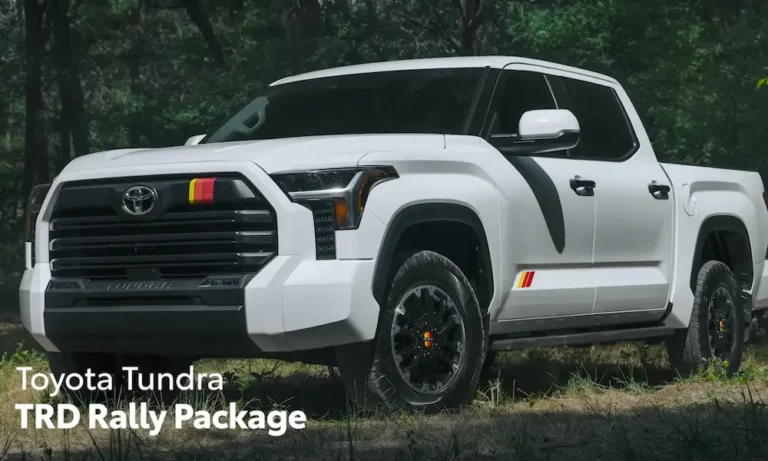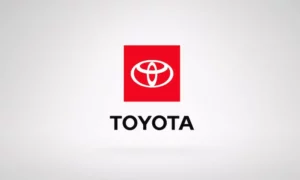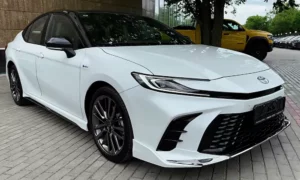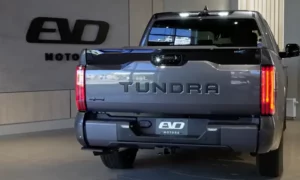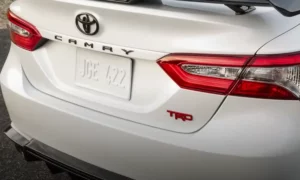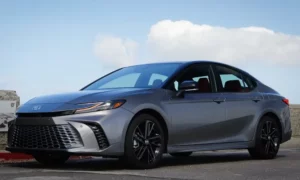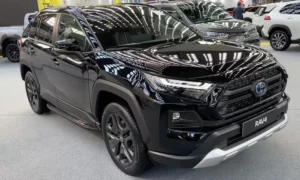Ever wondered where your Toyota Tundra comes from? The answer might surprise you. The Toyota Tundra isn’t just assembled in America—it’s a thoroughbred American product with deep Texas roots. If you’re curious about the manufacturing story behind this popular pickup truck, you’re about to discover how Toyota’s American manufacturing approach has reshaped the truck industry.
The Toyota Tundra’s Manufacturing Home: San Antonio, Texas
Since 2008, every Toyota Tundra rolling onto American roads has come exclusively from one place: Toyota Motor Manufacturing Texas (TMMTX) in San Antonio. This massive 2,000-acre facility serves as the global production hub for Toyota’s full-size pickup truck.
The San Antonio plant isn’t just big—it’s impressively efficient. A new Tundra comes off the assembly line every 60 seconds, thanks to a combination of advanced robotics and the skilled hands of over 3,700 workers. The facility spans 4.2 million square feet, making it one of Toyota’s largest manufacturing operations in North America.
The Tundra’s American Manufacturing Journey
The Tundra wasn’t always a Texas product. Let’s look at how its production evolved:
Princeton, Indiana: The Tundra’s Birthplace (1999-2008)
The Toyota Tundra’s American story began in Princeton, Indiana, at Toyota Motor Manufacturing Indiana (TMMI). This facility marked a significant milestone as the first full-size pickup truck produced by a Japanese automaker on U.S. soil.
The first-generation Tundra quickly gained recognition, winning Motor Trend’s Truck of the Year in 2000. However, the Indiana plant had limitations:
- Maximum annual capacity of 100,000 trucks
- Growing demand exceeded production capabilities
- Limited space for expansion
The Move to Texas: A Strategic Shift
By 2003, Toyota recognized the need for a dedicated truck factory with greater capacity. The company broke ground on a $1.2 billion facility in San Antonio, Texas, specifically designed for the second-generation Tundra. This transition highlights Toyota’s commitment to American manufacturing:
- Production began in 2006 in San Antonio
- Both plants produced Tundras during the 2006-2008 transition
- All Tundra production consolidated to Texas in 2008
- Production capacity doubled to 200,000 units annually
This strategic relocation coincided with the launch of the second-generation Tundra, which reclaimed Motor Trend’s Truck of the Year title in 2008.
Inside Toyota’s Texas Truck Factory
The TMMTX facility isn’t just a manufacturing plant—it’s a marvel of modern production technology and efficiency.
Advanced Manufacturing Technologies
The San Antonio plant showcases Toyota’s commitment to innovation and precision:
- Stamping shop with over 1,000 dies shaping steel components
- Weld shop employing 400 robots to assemble body structures
- Water-based paint shop designed to minimize environmental impact
- Flexible assembly lines that can adapt to different Tundra models
Each production area reflects Toyota’s philosophy of kaizen (continuous improvement) and lean manufacturing principles. The result is exceptional quality control that helps maintain the Tundra’s reputation for durability.
The Supplier Park Model: A Manufacturing Innovation
One of the most innovative aspects of the San Antonio facility is its on-site supplier network:
- 21 key suppliers operate directly on the TMMTX campus
- Components arrive “just-in-time” to the assembly line
- Reduced shipping costs and transportation emissions
- Enhanced quality control through closer supplier relationships
This “supplier park” concept has become a model for automotive manufacturing efficiency. Major components like seats, dashboards, and exhaust systems are produced minutes away from where they’re needed, reducing delays and improving flexibility.
Made in America: The Tundra’s American Parts Content
Despite being a Japanese brand, the Toyota Tundra is genuinely American-made:
- 75% of Tundra parts are sourced from North America
- 60% of components come directly from U.S. suppliers
- Engines and transmissions are manufactured domestically
- Ranked 12th on the 2023 Cars.com American-Made Index, ahead of the Ford F-150 (66th) and Chevrolet Silverado (28th)
This commitment to domestic sourcing places the Tundra among the most American-made trucks available today. In 2024, Toyota announced plans to add an on-site rear axle assembly line by 2026, further increasing the truck’s domestic content.
Economic Impact: How Tundra Manufacturing Benefits Texas
The TMMTX facility has transformed San Antonio’s economy in numerous ways:
Job Creation and Investment
Toyota’s presence has become an economic engine for the region:
- 3,700+ direct manufacturing jobs
- 5,600+ additional positions through on-site suppliers
- $227 million invested in local infrastructure
- $9 million invested in the ToyotAbility Production Center for workforce training
Community and Environmental Initiatives
Beyond jobs and economic output, Toyota has demonstrated commitment to the local community:
- Donated 678 acres to San Antonio for ecological preservation
- Partnerships with local colleges for skills development
- Support for STEM education programs in area schools
These investments show how modern manufacturing can benefit communities beyond simply providing employment.
The Tundra Production Process: From Steel to Showroom
Let’s walk through how a Toyota Tundra is actually built at the San Antonio facility:
1. Stamping
The process begins with massive rolls of steel that are cut, shaped, and stamped into body panels. The TMMTX stamping shop uses precision dies to form the Tundra’s distinctive body parts, with quality checks throughout the process.
2. Body Welding
In the weld shop, robots and skilled workers assemble the stamped parts into the truck’s body structure. This area combines:
- 400+ robots performing precise welding operations
- Laser measurement systems ensuring dimensional accuracy
- Human inspection at critical quality checkpoints
3. Painting
The Tundra bodies move through a multi-stage paint process that includes:
- Surface preparation and cleaning
- Primer application
- Base color coat
- Clear protective finish
- Baking and curing
Toyota’s water-based painting system reduces environmental impact while providing excellent durability.
4. Assembly
On the main assembly line, the painted body receives:
- Engine and transmission (installed from below)
- Interior components (dashboard, seats, electronics)
- Doors and windows
- Wheels and tires
This synchronized process brings together thousands of parts in a precisely choreographed sequence.
5. Quality Control
Before leaving the factory, each Tundra undergoes rigorous testing:
- Water leak testing
- Electrical system validation
- Wheel alignment and brake testing
- Road simulation on special test tracks
Only after passing these checks does a Tundra receive final approval for shipping to dealerships.
The Future of Tundra Manufacturing in Texas
Toyota continues to invest in the San Antonio facility, with several initiatives planned:
Electrification and Sustainable Production
The TMMTX plant is evolving to support Toyota’s electrification strategy:
- Already producing hybrid Tundra variants
- Implementing energy efficiency improvements across the facility
- Exploring additional battery assembly capabilities
Expansion Plans
Toyota’s commitment to American manufacturing continues with:
- New $9 million rear axle assembly line coming in 2026
- Exploration of additive manufacturing (3D printing) for parts production
- Ongoing investments in automation and workforce development
These plans ensure that the Tundra will remain American-made for the foreseeable future.
How the San Antonio Plant Compares to Other Truck Factories
Toyota’s approach to manufacturing the Tundra differs from competitors in several ways:
| Aspect | Toyota Tundra (San Antonio) | Typical Competitor Approach |
|---|---|---|
| Production Location | Single dedicated facility | Multiple plants across regions |
| Supplier Integration | 21 suppliers on-site | Distributed supply network |
| U.S. Parts Content | 60% domestic content | Varies widely (35-70%) |
| Production Flexibility | Can build multiple variants on one line | Often specialized by model variant |
| Annual Capacity | 250,000+ units | Varies by manufacturer |
This focused approach allows Toyota to maintain exceptionally tight quality control while building the Tundra exclusively in America.
Why Toyota Chose Texas for Tundra Production
Toyota’s decision to locate Tundra production in Texas wasn’t random. Several factors influenced this strategic choice:
- Central location reduces shipping costs to major markets
- Strong truck culture and consumer base in Texas
- Business-friendly regulatory environment
- Available workforce with manufacturing experience
- Access to transportation infrastructure (rail and highways)
This decision has paid dividends for both Toyota and the local economy, creating a manufacturing success story in the heart of truck country.
The Tundra’s American Legacy
The Toyota Tundra stands as a testament to successful automotive manufacturing in America. From its Indiana beginnings to its Texas home, this truck has helped redefine what “American-made” means in today’s global economy.
For consumers shopping for a new pickup truck, knowing where the Toyota Tundra is manufactured provides useful context about its quality, economic impact, and American credentials. When you drive a Tundra, you’re not just driving a Toyota—you’re driving a product of American manufacturing excellence with deep Texas roots.

